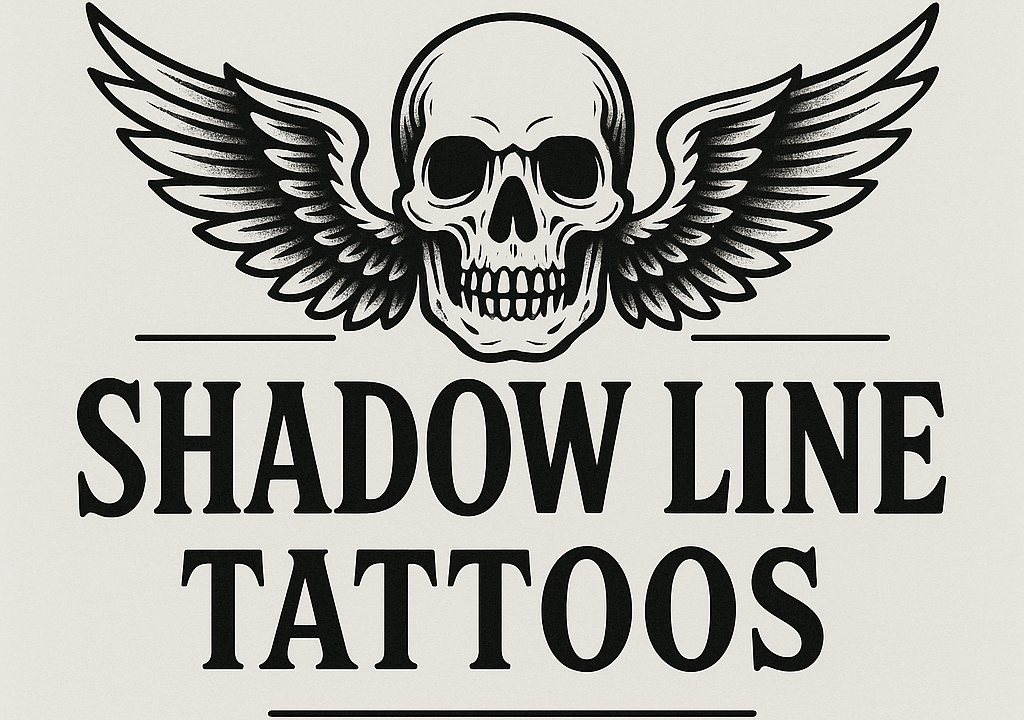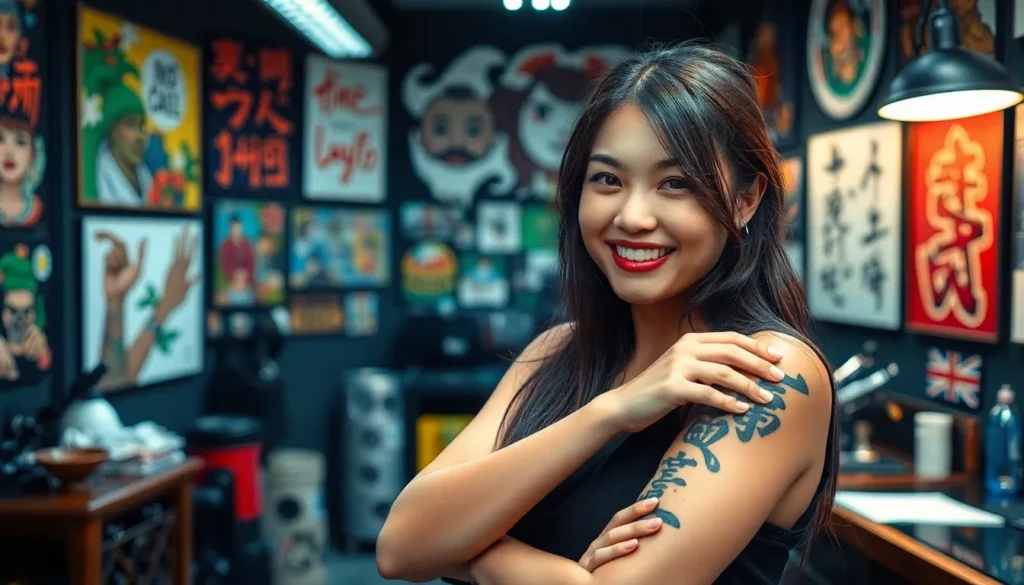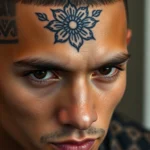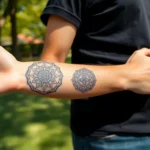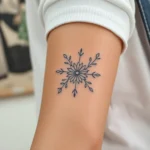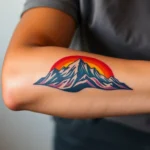Kanji tattoos have captivated people worldwide with their elegant beauty and profound meanings. We’ve seen countless individuals choose these intricate Japanese characters to express their deepest values, beliefs, and personal stories through permanent ink. The allure lies not just in their artistic appeal but in how each symbol carries centuries of cultural significance and philosophical depth.
When we explore kanji tattoo options, we’re diving into a rich tapestry of meanings that range from strength and courage to love and wisdom. These characters offer a unique way to communicate complex concepts through minimalist yet powerful designs. Whether you’re drawn to single characters or meaningful phrases, kanji tattoos provide endless possibilities for personal expression.
We’ll guide you through the most popular kanji designs, their authentic meanings, and essential considerations before getting inked. From traditional symbols to modern interpretations, we’re here to help you discover the perfect kanji tattoo that resonates with your personal journey.
Traditional Japanese Symbols for Strength and Power
These powerful kanji characters represent the most sought-after qualities in Japanese culture and make striking tattoo designs for those seeking to embody inner fortitude.
Chikara (力) – Physical and Inner Strength
Chikara stands as one of the most recognizable kanji for strength, featuring bold strokes that mirror its powerful meaning. This character represents both physical prowess and mental fortitude, making it perfect for individuals who’ve overcome important challenges. We often see this kanji chosen by athletes, martial artists, and those who’ve battled through difficult life circumstances.
The simple yet striking design consists of just two confident strokes, creating a symbol that’s both minimalist and impactful. Placement options include the forearm, shoulder blade, or behind the ear for a subtle yet meaningful statement. Many tattoo enthusiasts appreciate how this kanji captures the essence of personal growth and determination in such an elegant form.
Tsuyoi (強い) – Strong and Resilient
Tsuyoi embodies resilience and unwavering determination through its complex character structure. This kanji specifically emphasizes the ability to withstand pressure and bounce back from adversity, resonating deeply with survivors and warriors. We recommend this symbol for those who’ve demonstrated remarkable perseverance in facing life’s obstacles.
The character features intricate details that create visual depth, making it ideal for larger tattoo placements like the back, chest, or thigh. Professional tattoo artists often suggest this kanji for clients seeking a design that represents their journey through hardship. The bold horizontal and vertical lines symbolize stability and strength, while the inner components represent the complexity of true resilience.
Yūki (勇気) – Courage and Bravery
Yūki combines two powerful concepts into a single meaningful expression of fearless determination. This dual-character kanji translates to courage and represents the bravery needed to face unknown challenges head-on. We find this symbol particularly popular among first responders, military personnel, and individuals embarking on major life changes.
The first character (勇) depicts a warrior’s spirit, while the second (気) represents life force or energy. Together, they create a tattoo design that speaks to both physical bravery and emotional courage. Placement suggestions include the ribcage, upper arm, or calf, where the two characters can be properly spaced and detailed. Many choose to incorporate this kanji into larger sleeve designs or pair it with complementary symbols like dragons or phoenixes.
Meaningful Kanji for Love and Relationships
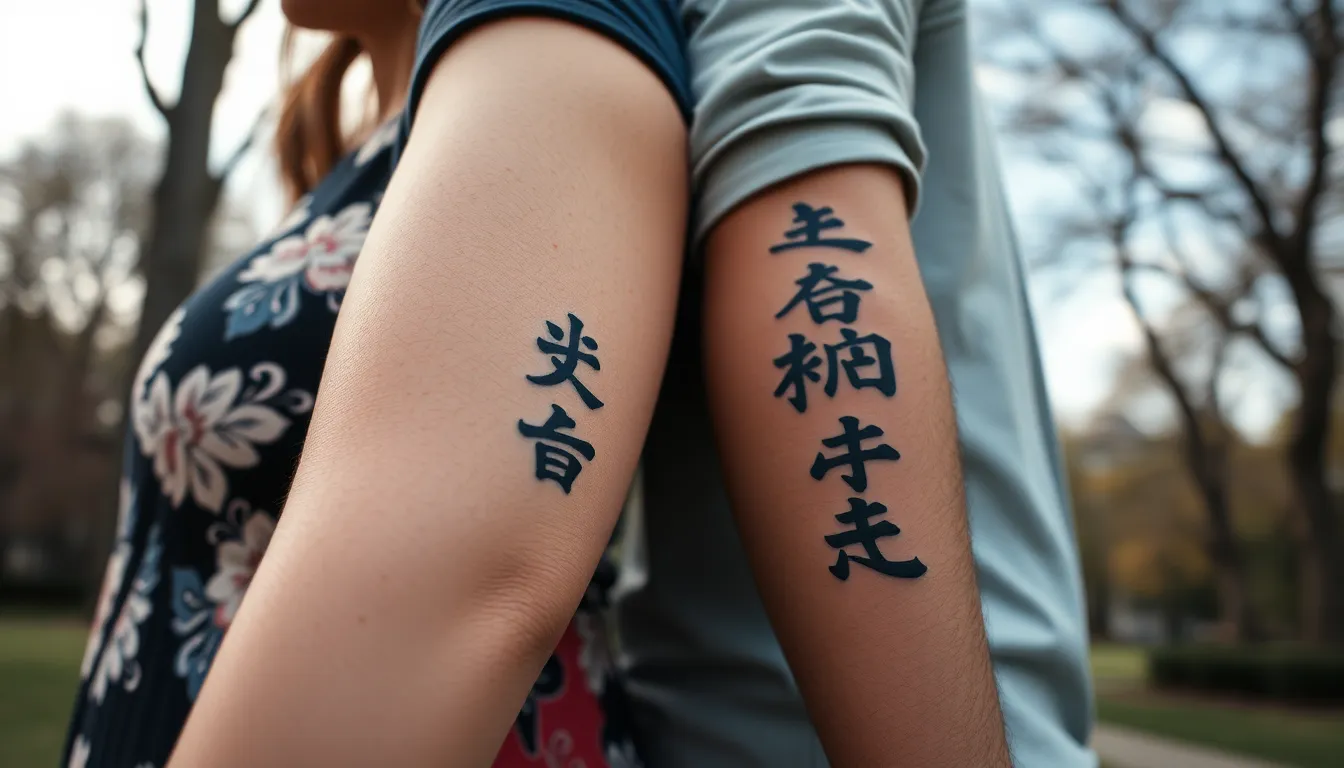
Love transcends language barriers, and kanji characters offer profound ways to express the deepest emotions we hold for others. These Japanese symbols capture the essence of human connection in ways that simple words often cannot.
Ai (愛) – Universal Love
Ai (愛) represents the most comprehensive form of love in Japanese culture. This powerful kanji encompasses unconditional affection that extends beyond romantic relationships to include family bonds, friendships, and even spiritual love. We see this character chosen by people who want to honor their capacity for deep, eternal love that touches every aspect of their lives. The complexity of this kanji, with its intricate strokes, mirrors the multifaceted nature of universal love itself. Many couples choose matching Ai tattoos to symbolize their commitment to loving not just each other, but also building a life filled with compassion and understanding.
Koi (恋) – Romantic Love
Koi (恋) captures the excitement and passion of romantic relationships. This kanji specifically represents the butterflies, anticipation, and joy that come with falling in love and maintaining romantic connections. We often recommend this character for individuals celebrating new relationships or milestone anniversaries. The visual simplicity of Koi compared to Ai reflects the pure, focused nature of romantic attraction. Couples frequently incorporate this kanji into wedding ceremonies or engagement celebrations as a testament to their romantic bond. Its lighter emotional weight makes it perfect for expressing the fun and thrilling aspects of love.
Kazoku (家族) – Family Bond
Kazoku (家族) embodies the unbreakable ties that bind families together. This two character combination literally translates to “family” and represents loyalty, support, and unconditional acceptance found within family units. We recommend this meaningful tattoo for people honoring their heritage, celebrating new family additions, or commemorating family members who’ve passed away. The dual character nature of Kazoku symbolizes how individual family members come together to create something stronger than the sum of their parts. Many parents choose this kanji when welcoming children, while others use it to honor the families that shaped them into who they’ve become.
Spiritual and Philosophical Kanji Concepts
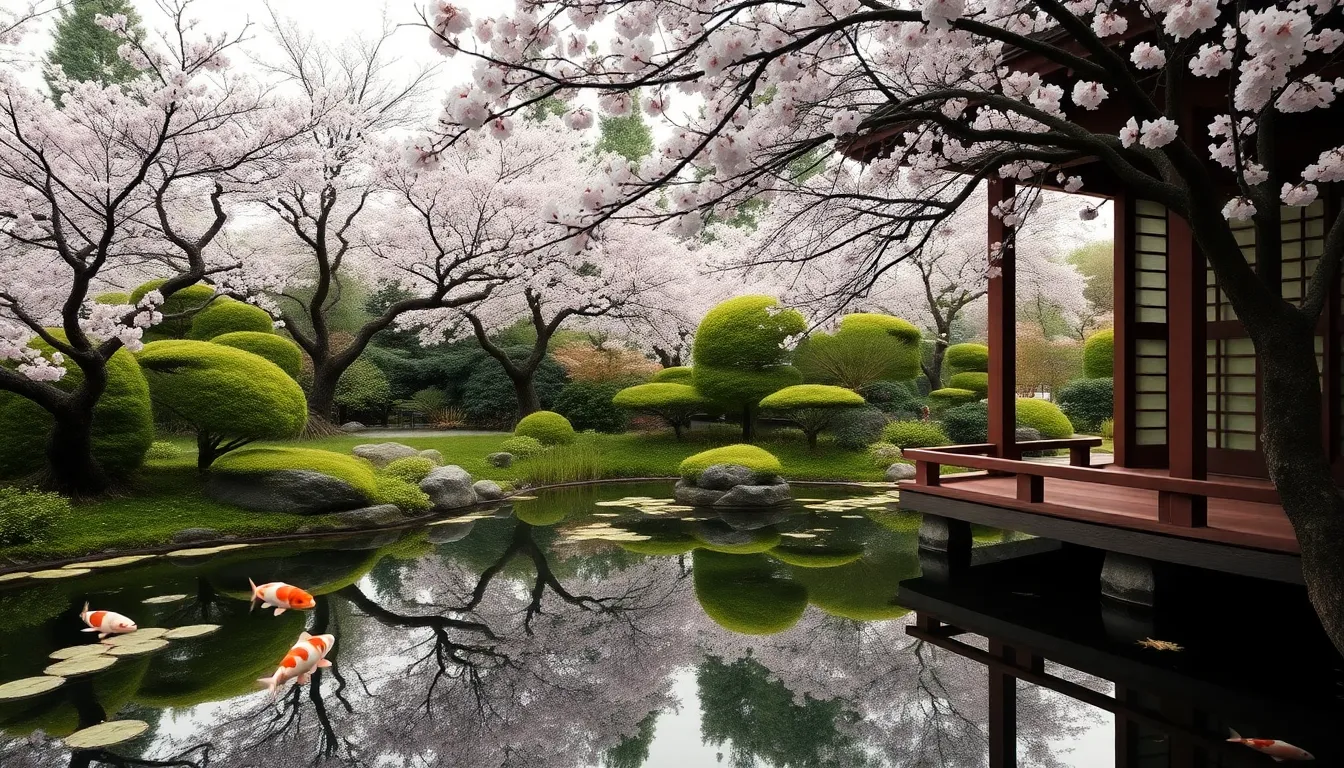
Moving beyond expressions of strength and love, we find that some of the most profound kanji tattoos embody spiritual wisdom and philosophical depth. These characters connect us to ancient Buddhist and Zen traditions that have guided people toward inner peace for centuries.
Zen (禅) – Meditation and Peace
Zen represents the ultimate state of calmness and inner peace through meditation and mindfulness practices. This powerful kanji draws directly from Zen Buddhism, where practitioners use meditation to achieve spiritual enlightenment and mental clarity. We see this character chosen by those who’ve found peace through meditation or yoga practice.
Choosing Zen as a tattoo symbolizes your commitment to living mindfully and seeking balance in daily life. The character itself appears deceptively simple, yet it carries the weight of centuries-old wisdom about finding stillness in our busy industry. Many people select this kanji after groundbreaking meditation retreats or during periods of personal spiritual growth.
Kokoro (心) – Heart and Spirit
Kokoro encompasses both the heart and mind, representing the complete emotional and spiritual self. Unlike Western concepts that separate heart from mind, this Japanese character unifies these aspects into one meaningful symbol. We recommend this kanji for those who value emotional intelligence and spiritual awareness equally.
This versatile character expresses sincerity, deep emotion, and authentic connection to your inner truth. Artists and healers often choose Kokoro because it represents their dedication to touching others’ hearts through their work. The character’s elegant strokes mirror the complexity of human emotion while maintaining beautiful simplicity.
Wa (和) – Harmony and Balance
Wa signifies harmony and balance, promoting unity and peaceful consensus in all relationships. This fundamental Japanese concept goes beyond personal peace to cover social harmony and community wellbeing. We often see this kanji chosen by mediators, counselors, and those who naturally bring people together.
Selecting Wa as your tattoo demonstrates your commitment to creating balance in both personal and professional relationships. The character appears in many Japanese cultural contexts, from the tea ceremony to martial arts, where achieving harmony is essential. People recovering from conflict or those starting fresh chapters often find deep meaning in this symbol of restored balance.
Nature-Inspired Kanji for Connection to Elements
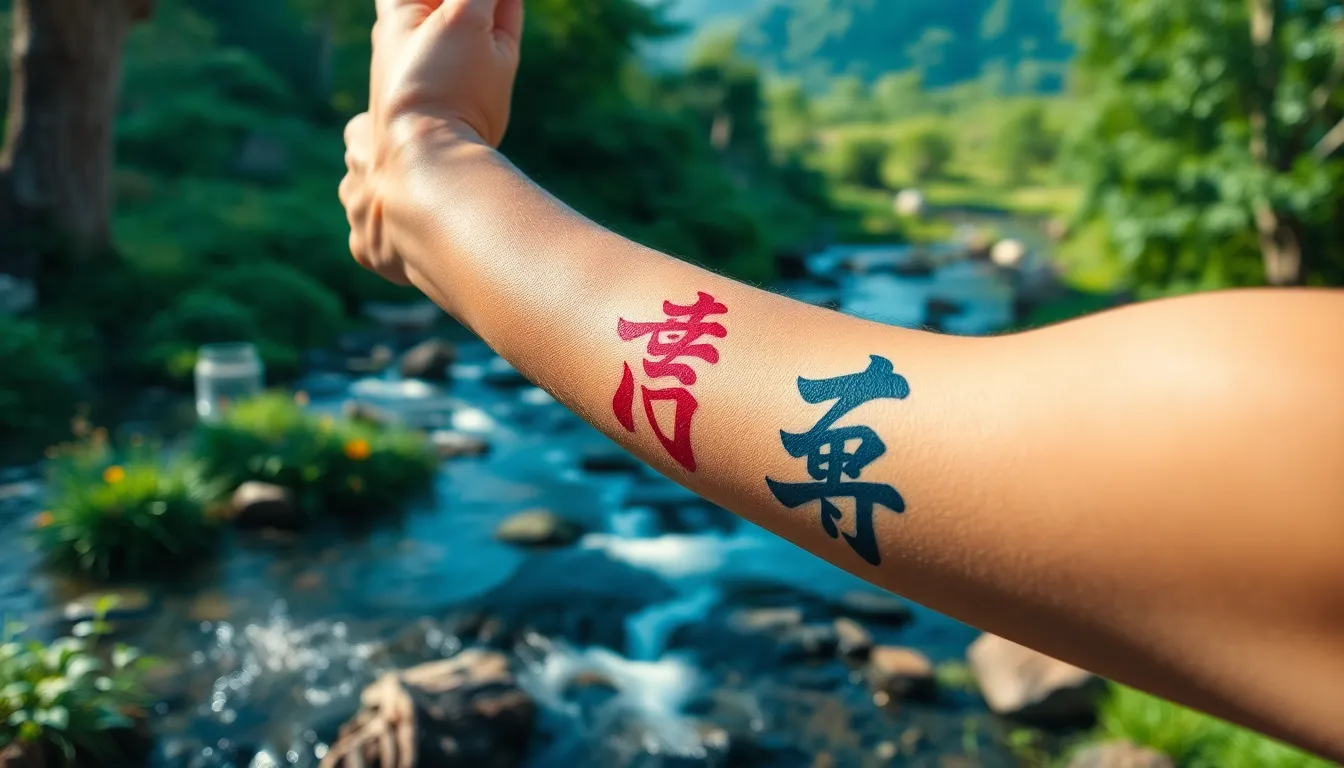
Nature holds profound significance in Japanese culture, making elemental kanji particularly meaningful for tattoo enthusiasts seeking deeper spiritual connections. These powerful symbols represent our fundamental relationship with the natural industry around us.
Mizu (水) – Water and Flow
Water represents life’s constant movement and adaptability in Japanese philosophy. The kanji Mizu (水) captures this fluidity through its elegant brushstrokes that mirror flowing streams and cascading waterfalls. We often see this symbol chosen by individuals who embrace change and seek to embody water’s qualities of persistence and grace.
Swimmers and surfers frequently select this kanji to honor their connection to aquatic environments. The symbol also resonates with people who’ve navigated major life transitions, as water symbolizes the ability to flow around obstacles rather than fight against them. Artists and creative professionals appreciate Mizu’s representation of continuous movement and transformation in their work.
Hi (火) – Fire and Passion
Fire embodies raw energy, transformation, and passionate drive in Japanese symbolism. The kanji Hi (火) displays flame-like strokes that capture fire’s ever-changing nature and intense power. We recommend this symbol for individuals who channel their inner fire to achieve ambitious goals and inspire others around them.
Entrepreneurs and business leaders often choose Hi to represent their burning ambition and determination to succeed. Athletes select this kanji to symbolize their competitive spirit and intense training dedication. The symbol also appeals to artists who create with fiery passion and individuals who’ve overcome important challenges through sheer willpower and strength.
Kaze (風) – Wind and Freedom
Wind represents freedom, movement, and the invisible forces that guide our lives. The kanji Kaze (風) captures air’s ethereal nature through flowing lines that suggest movement and liberation. We see this symbol chosen by free spirits who value independence and those who seek to break away from conventional constraints.
Travelers and adventurers frequently select Kaze to represent their wandering spirits and desire for new experiences. Musicians and performers appreciate this kanji’s connection to breath and the invisible power that carries sound and emotion. The symbol also resonates with individuals who’ve found freedom after periods of restriction or those who guide others toward their own liberation.
Single Character Kanji for Minimalist Designs
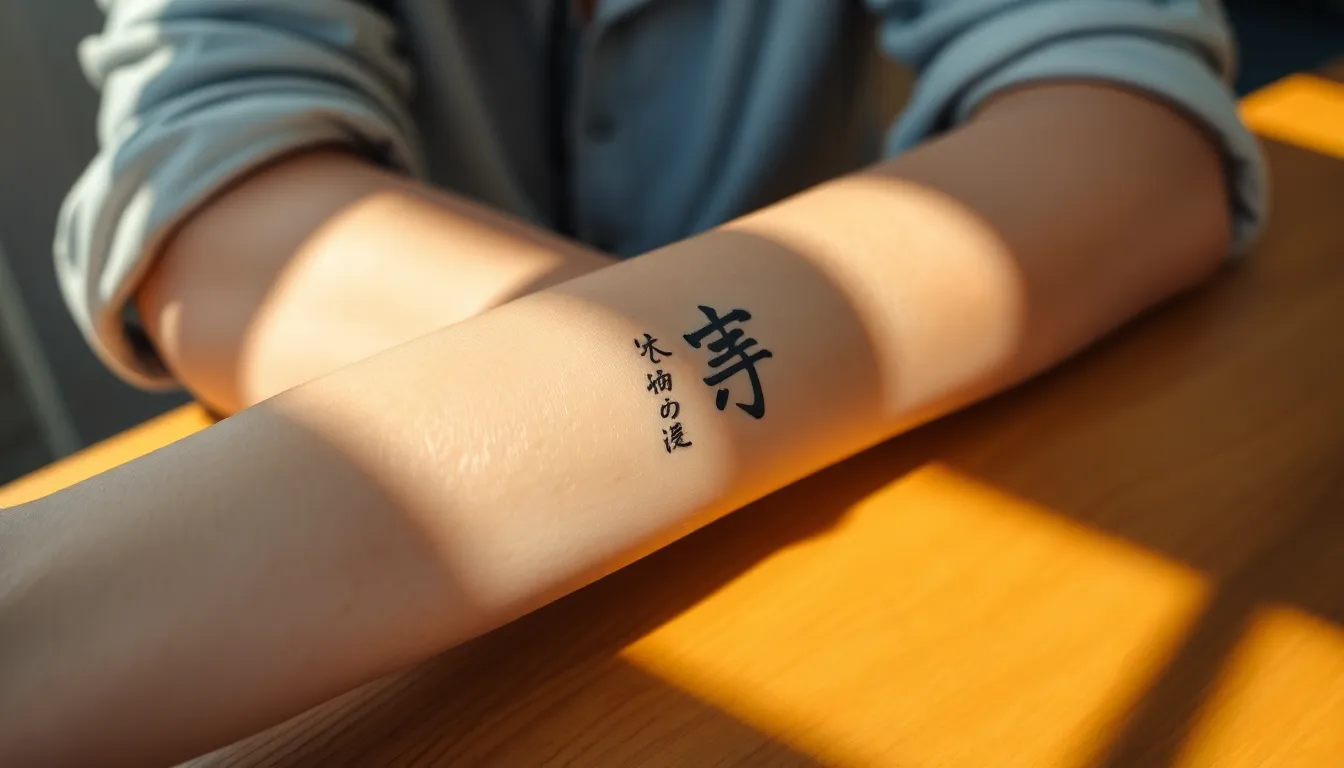
Minimalist kanji tattoos offer powerful symbolism through elegant simplicity. These single character designs carry profound meanings while maintaining clean aesthetics that appeal to modern tattoo enthusiasts.
Yume (夢) – Dreams and Aspirations
Yume represents the pursuit of dreams and personal aspirations in Japanese culture. This beautifully complex character features intricate brush strokes that symbolize the multifaceted nature of our deepest desires and goals.
Artists often choose Yume when they’re embarking on creative journeys or pursuing artistic careers. The character resonates with individuals who’ve overcome obstacles to chase their dreams, making it particularly meaningful for entrepreneurs and visionaries.
Placement options for Yume work exceptionally well on the wrist, forearm, or behind the ear. The character’s vertical structure creates stunning visual impact while remaining subtle enough for professional environments.
Hikari (光) – Light and Hope
Hikari embodies illumination and optimism through its representation of light and hope. This radiant kanji features clean lines that capture the essence of brightness cutting through darkness, making it perfect for those who’ve found hope in difficult times.
Mental health advocates frequently select Hikari to commemorate their journey toward healing and recovery. The character serves as a permanent reminder that light exists even in the darkest moments, offering daily inspiration and strength.
Tattoo artists recommend placing Hikari on areas where natural light hits the skin, such as the shoulder or collarbone. This positioning creates beautiful interplay between the tattoo’s meaning and its physical interaction with sunlight.
Makoto (誠) – Truth and Sincerity
Makoto stands for authenticity and genuine character in Japanese philosophy. This powerful kanji combines elements that represent honest communication and sincere intentions, appealing to individuals who value transparency and integrity.
Professionals in counseling, mediation, and leadership roles often choose Makoto to reflect their commitment to honest practices. The character resonates with people who’ve learned the importance of authentic relationships through personal experience.
Strategic placement for Makoto includes the chest area near the heart or the inner forearm where it remains visible to the wearer. These locations emphasize the personal nature of living truthfully and maintaining sincere connections with others.
Complex Multi-Character Kanji Phrases
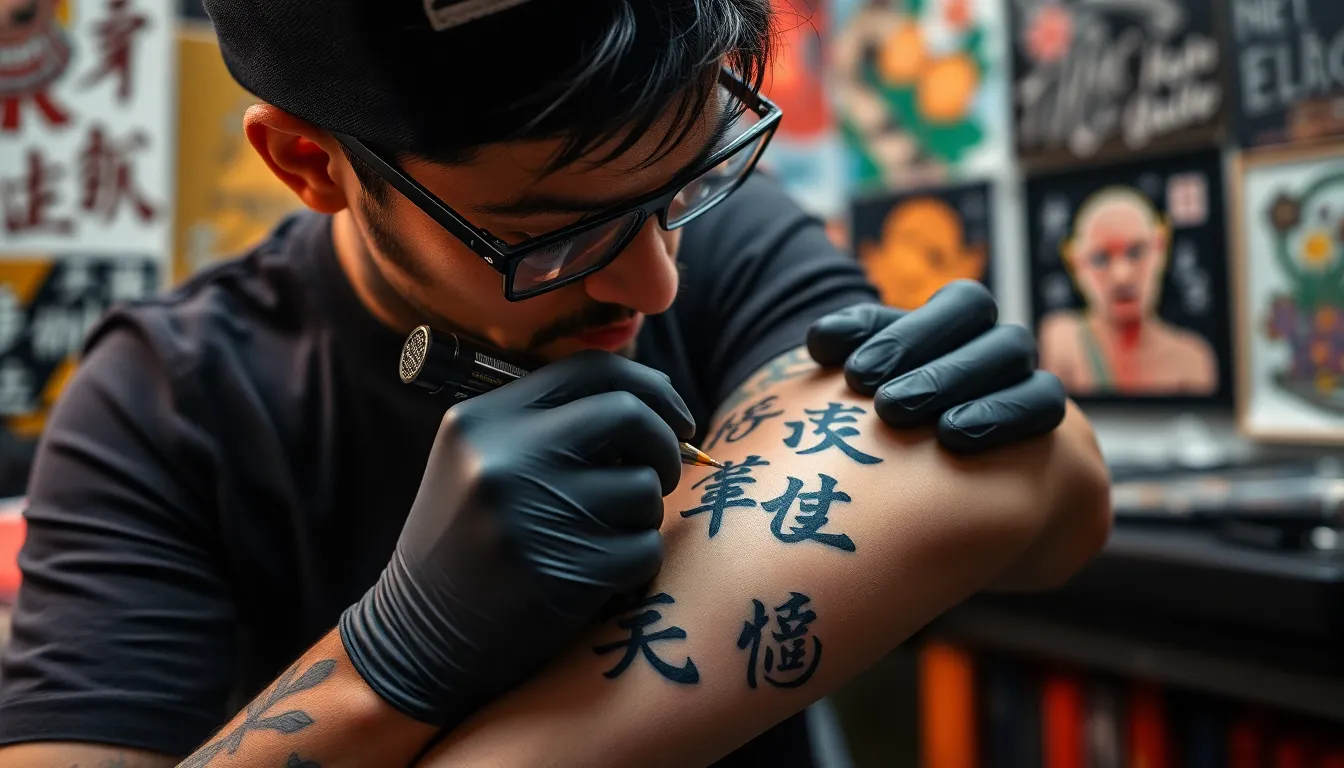
Multi-character kanji phrases offer profound wisdom through their intricate combinations, creating powerful tattoo designs that tell complete philosophical stories.
Nana Korobi Ya Oki (七転び八起き) – Fall Seven Times, Rise Eight
Nana Korobi Ya Oki embodies the ultimate message of resilience and perseverance through life’s inevitable challenges. This seven-character phrase literally translates to “fall seven times, stand up eight,” capturing the essence of never giving up even though repeated setbacks. Athletes often choose this phrase to represent their dedication to training through injuries and defeats. Entrepreneurs embrace this kanji combination as a reminder that failure is simply part of the journey to success.
Recovery advocates find deep meaning in these characters, using them to symbolize their ongoing battle against addiction or mental health struggles. The phrase works beautifully as a vertical tattoo along the spine or ribcage, allowing each character to flow naturally downward. Artists frequently incorporate subtle design elements like cherry blossoms or waves to enhance the visual impact while maintaining the phrase’s powerful simplicity.
Ichigo Ichie (一期一会) – One Time, One Meeting
Ichigo Ichie represents the precious nature of every human encounter and the importance of treasuring each moment. Originally from Japanese tea ceremony philosophy, this four-character phrase reminds us that every meeting is unique and will never happen again in exactly the same way. Wedding couples often select this phrase to commemorate their special day and the beginning of their shared journey together.
Travelers and cultural enthusiasts gravitate toward this design because it captures their appreciation for meaningful connections made during their adventures. The characters work exceptionally well as a horizontal design across the shoulder blade or forearm, creating a balanced composition that flows naturally with the body’s curves. Mental health advocates choose this phrase to remind themselves to stay present and value current relationships rather than dwelling on past regrets or future anxieties.
Mono no Aware (物の哀れ) – Beauty of Impermanence
Mono no Aware captures the bittersweet recognition that all things are temporary, finding beauty in life’s fleeting moments. This four-character phrase represents a uniquely Japanese aesthetic concept that acknowledges sadness while celebrating the preciousness of impermanent experiences. Artists and poets often choose this design to represent their understanding that beauty becomes more profound when we recognize its temporary nature.
Grief counselors and those who’ve experienced important loss find comfort in these characters, as they transform pain into appreciation for what once was. The phrase translates beautifully into minimalist tattoo designs, with each character carefully spaced to create visual breathing room that mirrors the concept’s contemplative nature. Memorial tattoos frequently incorporate this phrase alongside dates or symbols representing lost loved ones, creating a meaningful tribute that honors both the person and the philosophical acceptance of life’s cycles.
Popular Kanji Combinations for Personal Mantras
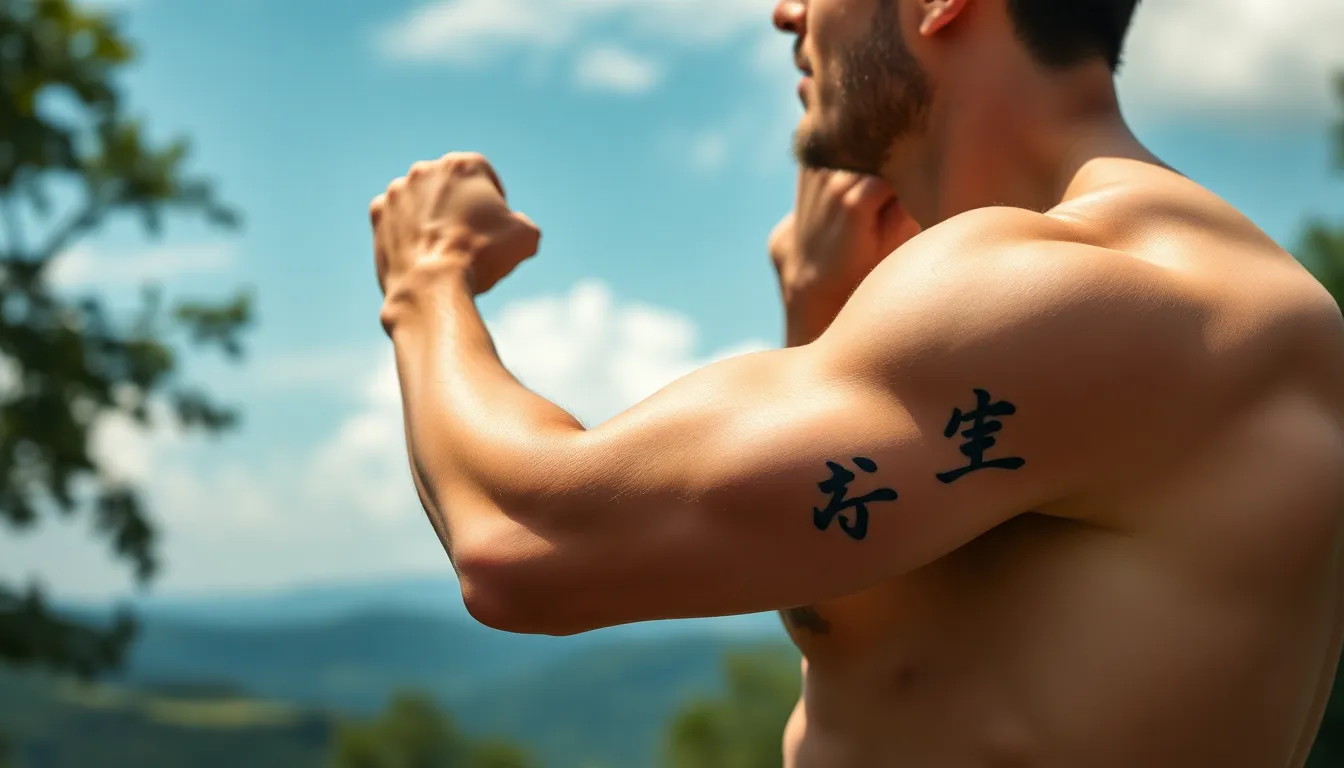
Personal mantras deserve the power and authenticity that come from carefully chosen kanji combinations. These multi-character expressions offer deeper meaning than single characters while creating powerful reminders of our core values.
Never Giving Up Concepts
Perseverance (努力, doryoku) stands as one of the most sought-after kanji combinations for those committed to pushing through challenges. This powerful pairing translates to “effort” or “try” and resonates strongly with athletes, entrepreneurs, and anyone facing important obstacles.
Zero Negative (無負, munō) creates a unique mantra that literally means “without defeat” or “unbeaten.” We’ve seen this combination gain popularity among individuals overcoming addiction, depression, or major life setbacks who want a daily reminder of their resilience.
Strength (強壮, kyōjō) combines the concepts of power and robust health into a single meaningful expression. The first character resembles a plow, symbolizing our ability to cultivate strength and overcome any terrain life presents to us.
Hope (希望, kibō) merges rare opportunity with expectation, creating a mantra that embodies optimism for the future. This combination works particularly well for those who’ve weathered storms and emerged with renewed faith in tomorrow’s possibilities.
Life Philosophy Expressions
Harmony (調和, chōwa) represents the delicate balance between opposing forces in our lives. This philosophical expression appeals to those seeking equilibrium between work and personal time, logic and emotion, or tradition and progress.
Balance (均衡, kinkō) takes the concept of harmony further by emphasizing equal distribution of life’s various elements. We recommend this combination for individuals in leadership roles or those managing multiple responsibilities who need reminders to maintain stability.
God’s Majesty (神威, shinni) symbolizes divine power and dignity while acknowledging forces greater than ourselves. This profound combination works beautifully as neck or arm tattoos for those who draw strength from spiritual beliefs.
Samurai’s Virtues include powerful combinations like “Rectitude” (正義, seigi) and “Courage” (勇気, yūki). These classical expressions represent the honor code that guided ancient warriors and continue inspiring modern individuals seeking principled lives.
Personal Growth Themes
Self Cultivation (自我修養, jiga shūyō) creates a comprehensive mantra for those dedicated to continuous personal development. This four-character combination emphasizes the ongoing work required to refine our character and expand our capabilities.
Improvement (改善, kaizen) represents the Japanese philosophy of continuous betterment through small, consistent changes. Business professionals and personal development enthusiasts often choose this combination as a reminder that progress happens through daily commitment rather than dramatic gestures.
Wisdom (知恵, chie) combines knowledge with practical intelligence, creating a mantra for lifelong learners. This pairing resonates with educators, counselors, and anyone who values the pursuit of deeper understanding over mere information gathering.
Endurance (忍耐, nintai) merges patience with the ability to withstand hardship, forming a powerful reminder that persistence conquers temporary discomfort. We’ve found this combination particularly meaningful for individuals in recovery, medical professionals, and parents handling challenging phases with their children.
Placement and Design Considerations for Kanji Tattoos
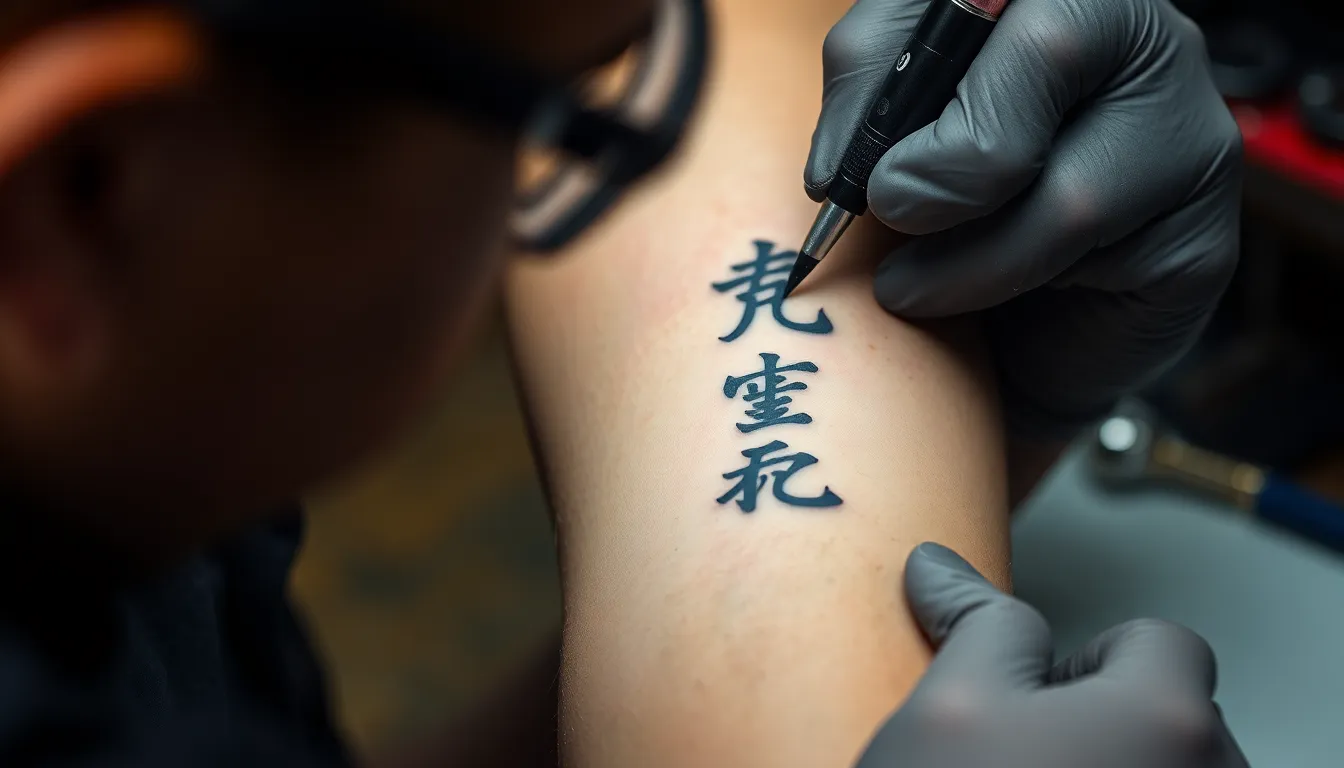
Choosing the perfect placement and design for your kanji tattoo requires careful consideration of several key factors. We’ll explore the essential elements that ensure your kanji tattoo becomes a meaningful and visually stunning piece of art.
Vertical vs Horizontal Orientation
Kanji characters traditionally flow vertically in Japanese writing, making this orientation ideal for exact body placements. We recommend vertical placement for areas like the back, arms, or legs where the natural flow of characters enhances the authentic appearance of your tattoo.
Horizontal orientation works exceptionally well for smaller kanji designs or exact body areas such as the wrist or ankle. This placement style accommodates the natural contours of narrower body parts while maintaining the character’s integrity and readability.
Size and Visibility Factors
Larger kanji characters demand more expansive canvas areas to preserve their intricate details and visual impact. We suggest considering areas like the back, chest, or thigh for complex characters that require space to maintain their authentic proportions and readability.
Smaller kanji designs offer versatility for discrete placements like behind the ear, on the wrist, or along the collarbone. The size should complement both the chosen body part and your desired visibility level, whether you prefer a bold statement piece or a subtle personal reminder.
Visibility considerations depend heavily on your lifestyle and professional requirements. Prominent placements on arms or chest work perfectly for those wanting to display their meaningful kanji, while discrete locations like the shoulder or back suit individuals preferring privacy in professional settings.
Complementary Design Elements
Traditional Japanese elements like cherry blossoms, waves, or bamboo can dramatically enhance your kanji tattoo’s meaning and aesthetic appeal. We recommend incorporating these complementary designs to create a cohesive piece that honors Japanese artistic traditions while amplifying your chosen kanji’s significance.
Understanding the symbolism behind both your kanji characters and any additional design elements proves crucial for alignment with your intended meaning. Working with an artist familiar with Japanese calligraphy ensures accuracy in character rendering, as small mistakes can completely alter the meaning of your chosen kanji.
Expert collaboration becomes essential when combining multiple design elements with kanji characters. This partnership helps avoid cultural appropriation concerns while creating a respectful and meaningful tattoo that accurately represents your chosen symbolism and personal values.
Cultural Respect and Accuracy Guidelines
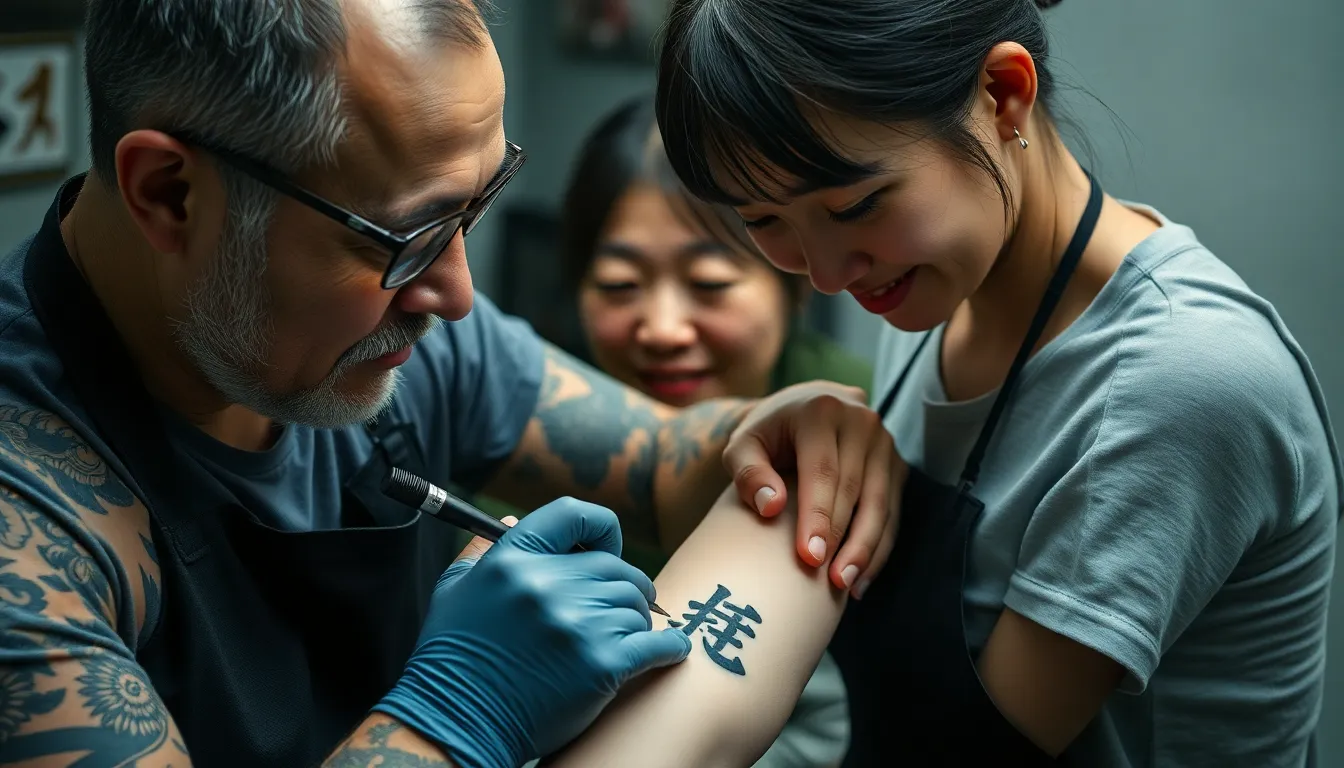
Getting a kanji tattoo requires careful consideration beyond just aesthetic appeal. We must approach these meaningful symbols with the respect and accuracy they deserve.
Proper Translation Verification
Accurate translation stands as the most critical step in your kanji tattoo journey. Professional Japanese language experts should verify every character’s meaning before you commit to permanent ink. We’ve seen countless examples of mistranslated tattoos, including Ariana Grande’s infamous “BBQ” mistake that became international news.
Consulting with experienced tattoo artists who specialize in Japanese characters provides another layer of verification. These professionals understand both the linguistic nuances and visual accuracy required for authentic kanji designs. Double-checking translations through multiple sources prevents embarrassing misinterpretations that could follow you for life.
Online translation tools often fail to capture the subtle meanings and cultural contexts of kanji characters. Native speakers or certified translators offer the expertise needed to ensure your chosen kanji conveys your intended message accurately.
Understanding Cultural Context
Kanji characters carry profound cultural significance that extends far beyond their literal translations. Each character embodies centuries of Japanese philosophy, history, and spiritual meaning that we must honor and understand. Traditional Japanese culture views these symbols as sacred expressions of deep wisdom and personal values.
Learning about the historical origins and cultural applications of your chosen kanji demonstrates genuine respect for Japanese heritage. Characters used in religious contexts, traditional ceremonies, or family names require especially careful consideration before adaptation into tattoo form.
Understanding when and how Japanese people traditionally use exact kanji helps inform appropriate tattoo choices. Some characters appear primarily in formal writing, while others carry everyday conversational meanings that might not translate well to permanent body art.
Avoiding Common Mistakes
Traditional kanji tattoo placement follows exact cultural guidelines that we should respect and understand. Japanese tattoo tradition typically positions kanji discreetly on areas like the back, arms, or chest rather than highly visible locations that might be considered disrespectful.
Avoiding cultural appropriation concerns requires approaching kanji tattoos as meaningful personal expressions rather than superficial fashion statements. We must ensure our tattoo choices reflect genuine connection to the character’s meaning and cultural significance. Researching the broader context of Japanese tattoo culture helps prevent unintentional offense.
Common placement errors include improper character orientation, incorrect sizing proportions, and mixing kanji with incompatible design elements. Working with artists familiar with traditional Japanese aesthetics ensures your tattoo maintains cultural authenticity while expressing your personal values appropriately.
Conclusion
Kanji tattoos offer a unique opportunity to carry profound meaning and cultural heritage on our skin. These beautiful characters transform personal values into timeless art that speaks to both the wearer and the industry around them.
We’ve explored dozens of meaningful kanji options from strength and love to wisdom and nature. Each character carries centuries of cultural significance that can perfectly align with our personal journeys and core beliefs.
Remember that choosing the right kanji isn’t just about aesthetics—it’s about honoring Japanese culture while expressing our authentic selves. Take time to research thoroughly work with experienced artists and ensure proper translation before making this permanent commitment.
Your kanji tattoo should feel like a natural extension of who you are. When you find that perfect character or phrase that resonates deeply with your story you’ll know you’ve discovered something truly special.
Frequently Asked Questions
What are kanji tattoos and why are they popular?
Kanji tattoos feature Japanese characters that combine elegant aesthetics with deep cultural meaning. They’re popular because they allow people to express personal values, beliefs, and stories through minimalist yet powerful designs. Each character carries historical and philosophical significance, making them meaningful choices for permanent body art.
What are the most popular kanji symbols for strength?
The most popular strength kanji include “Chikara” (力) representing physical and inner strength, “Tsuyoi” (強い) symbolizing resilience and ability to overcome adversity, and “Yūki” (勇気) combining courage and bravery. These characters are favored by athletes, first responders, and those who’ve overcome challenges.
Which kanji characters represent love and relationships?
Key love-themed kanji include “Ai” (愛) for universal love, “Koi” (恋) for romantic excitement, and “Kazoku” (家族) for family bonds. “Ai” reflects deep affection across all relationships, “Koi” celebrates new romance, and “Kazoku” honors family heritage and loyalty.
What spiritual kanji designs are available for tattoos?
Popular spiritual kanji include “Zen” (禅) for meditation and tranquility, “Kokoro” (心) unifying heart and mind, and “Wa” (和) representing harmony and balance. These characters appeal to those seeking inner peace, emotional intelligence, and spiritual awareness through their tattoo choices.
Are there nature-inspired kanji tattoo options?
Yes, nature kanji include “Mizu” (水) for water and adaptability, “Hi” (火) representing fire and passion, and “Kaze” (風) symbolizing wind and freedom. These designs resonate with individuals embracing change, driven by ambition, or seeking liberation and adventure in their lives.
What should I consider for kanji tattoo placement?
Traditional vertical orientation works best for larger areas like backs or arms, while horizontal placement suits smaller designs on wrists or ankles. Consider size and visibility carefully – larger tattoos for expansive areas, smaller ones for discreet placement. Collaborate with skilled artists for proper character rendering.
How can I ensure my kanji tattoo is culturally accurate?
Consult professional Japanese language experts for proper translation verification rather than relying on online tools. Understand the cultural context and historical significance of chosen characters. Avoid common mistakes like improper placement or orientation, and approach kanji tattoos as meaningful expressions rather than fashion statements.
What are some meaningful multi-character kanji phrases?
Popular phrases include “Nana Korobi Ya Oki” (七転び八起き) for resilience, “Ichigo Ichie” (一期一会) emphasizing treasuring each moment, and “Mono no Aware” (物の哀れ) reflecting life’s impermanence. These complex phrases convey profound wisdom and philosophical messages for deeper personal meaning.
